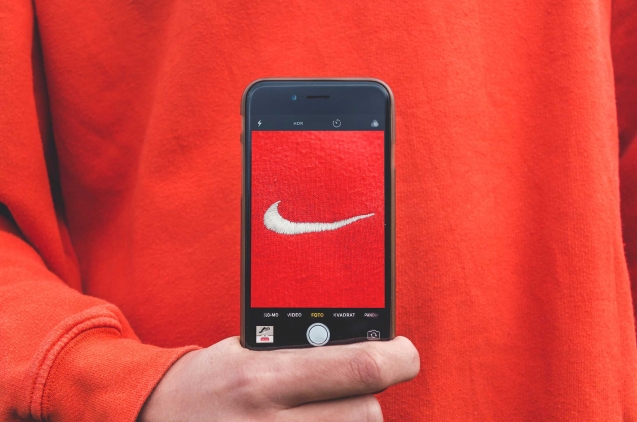Acronym
Word formed by the union of elements of two or more words (motel, emoticon, etc.). Acronyms that are pronounced as a word DAFO, FOMO, etc.
Anagram
New word formed by transposition of letters from any original word. In graphic design it is a symbol formed by acronym or syllables, the result of an acronym (Inditex, Seat, etc.).
Applications
Graphic representations of branding elements in different design pieces, such as stationery, promotional materials or digital formats.
Archetype
Marketing and branding tool that is used to define the personality of a brand based on 12 prototypical personalities. The 12 archetypes of behavior mark universal patterns of behavior and define the values and attitudes of a brand.
Architecture
The way in which a company organizes its catalog of brands, services and products in the market to improve its positioning. The strategies are differentiated by three brand roles: monolithic, endorsed and individual.
Attitude
Favorable or unfavorable reaction of the public to a brand, its image and attributes. It is associated with emotions and experiences, and it conditions the buying process.
Attributes
Tangible features and aspects that define a brand or product and create intangible partnerships. The basis for an emotional strategy.
Audiobranding
Set of sounds strategically used to build a brand. Part of sensory marketing, it is used to achieve the automatic identification of a brand with a specific sound.
Benchmarketing
Technique of analysis and comparison of a company with other market leaders. It is used to detect opportunities, threats and weaknesses.
Benefits
Achievement perceived by the user when consuming a product or service. They can be divided into:
Functional: designed to meet a universal need, they do not depend on the emotions of customers
Emotional: connected with feelings and sensations, satisfy the psychological factors of the user
Symbolic: satisfy the need for social self-expression through the consumption of brands.
Brand
Commercial identification of a product, service or company and all its tangible and intangible values. Differences a company from other competitors in the market.
Brand Ambassador
A person with credibility and recognition in the sector, contracted by a brand to represent and promote its services or products.
Brand awareness
Ability that a brand has to remain in the mind y of a consumer.
Brand aversion
Consumer distrust of the products or services of a brand, caused by prior experience or prejudice.
Branding
A set of processes whose objective is to build a brand with values and personality that differentiates it in the market and in the mind of the consumer.
Brand Descriptor
Definition of the activity of the company located under its logo. It allows you to quickly identify the main quality of a product or service.
Brand Essence
Intangible features of a brand that make it unique, the most important and representative.
Brand Identity
Values and characteristics that build the brand, define its mission and create a specific memory in the consumer's mind.
Brandjacking
Phenomenon of appropriation of a brand by a group of consumers who identify with it, to the point of considering it its possession.
Brand Loyalty
Consumer loyalty to a brand. Preference created by emotional ties and satisfaction that influences brand preferences.
Brand personality
A set of descriptive traits that are associated with a brand (character, emotions, etc.).
Brand Platform
A compendium of attributes of different types that configure and define a brand.
Brand Portfolio
A set of all brands belonging to a company.
Brand recognition
Ability of a consumer to recognize a brand after prior exposure to it.
Brand Value
Value and expectations assigned to a product by the consumer
Claim
Simple and direct phrase that synthesizes the attributes of a brand and highlights its differential value.
Clean slate brand
Little known brand that tries to enter the market, perceived by the user as transparent.
CMYK
Color code for printing, it consists of four digits indicating the combination of cyan, magenta, yellow and black (Cyan, Magenta, Yellow and Key).
Co-branding
Alliance of two or more brands in order to create a unique offer without losing your personality.
Corporate Identity Handbook
Document that puts in order all the rules of graphic application of a brand, from typographies and colors to logos, applications and images.
Corporate Social Responsibility
Actions of a company aimed at improving society, the environment or the well-being of its employees.
Creative briefing
Document in which the client provides information about his company and its objectives, integrate the details to determine the direction of the project.
Dilution
Weakening of distinctive capabilities of a known brand and loss of its exclusive values. It occurs because of unauthorized or erroneous use by third parties.
E-Branding
Generation of prestige and brand values through the use of digital strategies.
Employer branding
A business strategy that unites HR and marketing actions to achieve reputation and recognition as an employer of value to current and prospective employees.
Endorsed brand
A model that consists in creating sub-brands with their own identity for certain business units under a parent brand, which brings them together and adds prestige (such as Marriott and its various sub-brands across the price range).
Eponym
Brand name that thanks to its notoriety becomes a common name describing the products of the category, for example: Kleenex, Rimmel or Jeep.
Golden Ratio
Mathematical principle that has been used in art, architecture and design for thousands of years. An indicator of perfection and harmony in compositions.
Graphic mark
A set of graphic elements that build the visual appearance of a brand. It is divided into: logos, isotypes, isologos and imagotypes.
House of Brands
Brand architecture model in which each brand operates independently from the company.
HTML
Hexadecimal code consisting of a pad and 6 digits and letters, is used to identify colors in web design.
Imagotype
Graphic brand that combines the isotype and the logo. The graphic part and the text are not merged into one.
Indentation
Extra blank space to mark the beginning of a paragraph.
Individual Brand
A brand architecture strategy in which each sub-brand in a company's brand portfolio has its own unique and individual identity.
Ink Sequence
The order in which inks are printed.
Internal branding
Employee-centric communication strategy. It conveys the company's values and ideas to turn workers into brand ambassadors.
Isologo
Graphic mark in which the icon and text are integrated into each other indivisibly and inseparably.
Isotype
Iconic or symbolic part of a graphic brand. Design that represents a brand without the need for typography.
Logo
Graphical representation of a brand name using only typographical compositions, without other graphic elements.
Lorem ipsum
Text commonly used in graphic design to preview typography demonstrations in visual layouts.
Lovemark
A concept that aims to establish emotional links between a brand and its customers that goes beyond its products or services.
Misbranding
The practice of misleading labeling a product to mimic another or indicate the wrong amount of an ingredient to take advantage of customer confusion.
Mission
It describes the activity of a company in the market, the reason for its business, who it is directed to and what its objectives are.
Monolithic brand
A brand architecture model in which products or services do not have individual identities, all contribute to a “masterbrand” and share the generic brand personality (such as Virgin or FedEx).
Mockup
Photo montages with graphic and web designers can show the customer how their designs will look on different media, such as a business card, a brochure or a website.
Monogram
A symbol consisting of graphical representations of one or more letters, usually initials.
Naming
Creative process whose goal is to choose the name of a brand.
Neologism
Invented word, without prior meaning, created to name a new concept.
Noa
Terms that are not perceived negatively in the languages and cultures considered. The naming process must ensure that the brand name is noa.
Offset
Printing technique commonly used in advertising.
Overbranding
Indiscriminate use of proprietary brand names. That is, the excessive use of logos or emblems of the brand.
Own brand
A line of generic products belonging to a distribution chain, usually a supermarket.
Pantone
A system that makes it possible to identify colors using a code.
Parent brand
Reference mark, the most important in the internal hierarchy of a company. Depending on their importance, in the architecture of brands can be distinguished: monolithic brands, endorsed brands and individual brands.
Personal branding
Approach to the individual as a brand that should be developed in a similar way to brands.
Place branding
Creation of a brand identity in one place. You can refer to a municipality, region, or country.
Positioning
Perception of the brand against competitors on the part of the consumer.
Positioning Statement
Brief text describing the strategic positioning of a brand. It specifies your value proposition, the position you intend to occupy in the market, main objectives and attributes.
Primary and Secondary Color
Color range of corporate colors that are divided into main colors that are protagonists of the communication of a brand and in secondary colors that accompany and complete them.
Protection area
Space delimited around a logo, it allows to protect it from other graphic elements and ensure its readability.
Reason to believe
Reason that causes the consumer to believe in the value proposition.
Rebranding
Redesign of the identity of a brand through various actions such as the change of logo or name.
Readability
Features of a text that allow easy reading and understanding. A must for a correct representation of a logo in any format or size.
Reticle
Structure to organize web content widely used in graphic design.
RGB
Red, Green, Blue. It is a model that makes it possible to create any color by mixing these.
Screen printing
Printing system widely used in advertising.
Sensory branding
Branding practices focused on reinforcing the image of a brand with stimulation of different senses, such as touch, smell or sound.
Slogan
A short and creative word or phrase, easy to memorize, defines the identity of a brand or conveys an idea or value. It is used in its advertising messages.
Sub-brand
A way to differentiate a product or explore market niches by endowting an individual brand identity to a product or group of products within a brand.
Tagline
Synthetic description that is incorporated to a brand. It is characterized by being witty and catchy.
Typography
Study of the characters of a text from the visual and design point of view.
Typographic Grid
A template with horizontal and vertical lines that serves to organize all typographical elements and images. Used to set the sizes, proportions, margins, and contours of a logo.
Top of the heart
Emotional preference or attachment to a brand by the consumer.
Top of mind
The first brand a consumer thinks of when referring to a product or service.
Underbranding
Grouping of very different products under a brand, causing confusion on the part of consumers.
Value proposition
Differential that makes an attractive and unique offer.
Voice tone
Communicative, visual and register aspects that identify a brand.
Vission
Goals the company wants to achieve in the future. They must be realistic and achievable.


